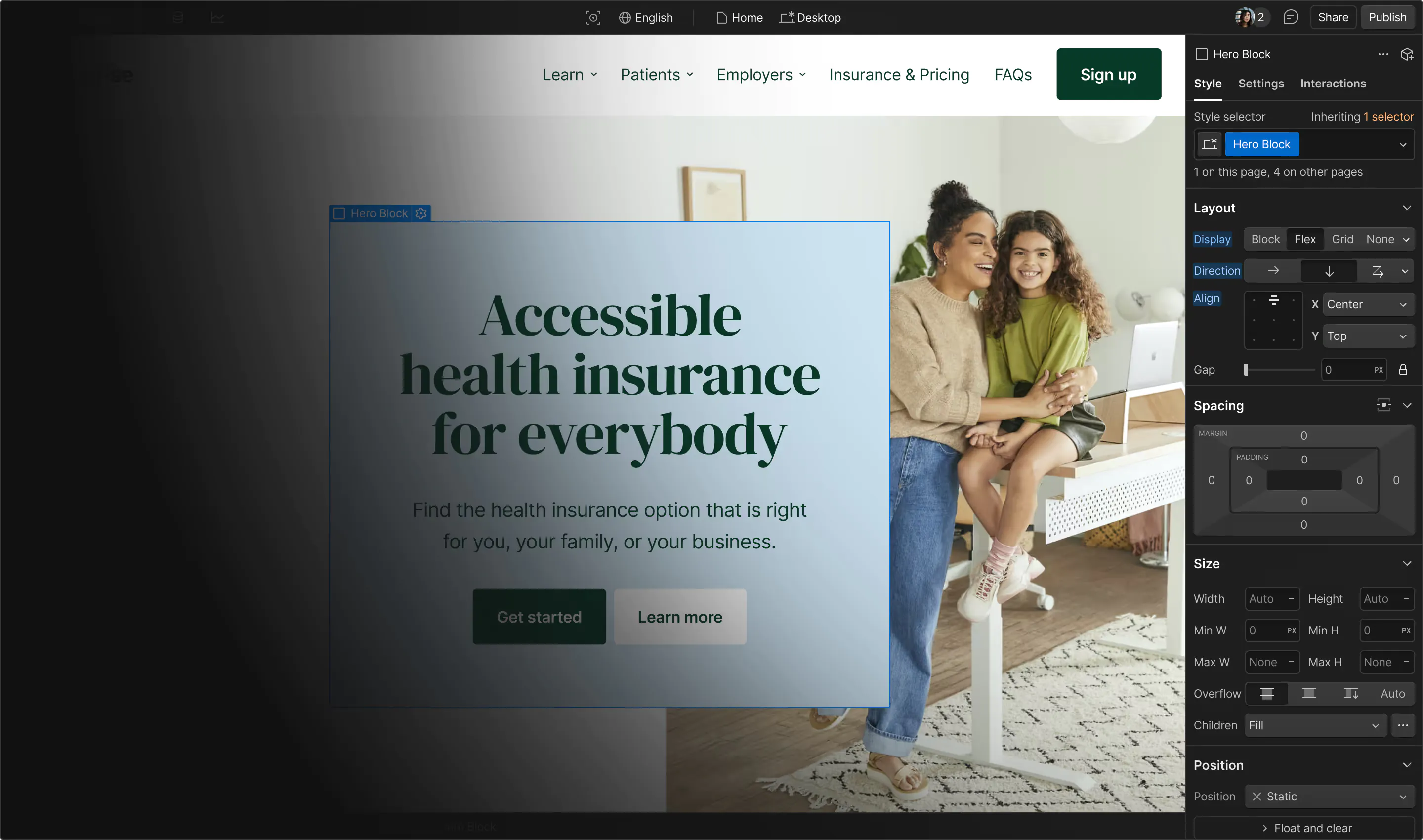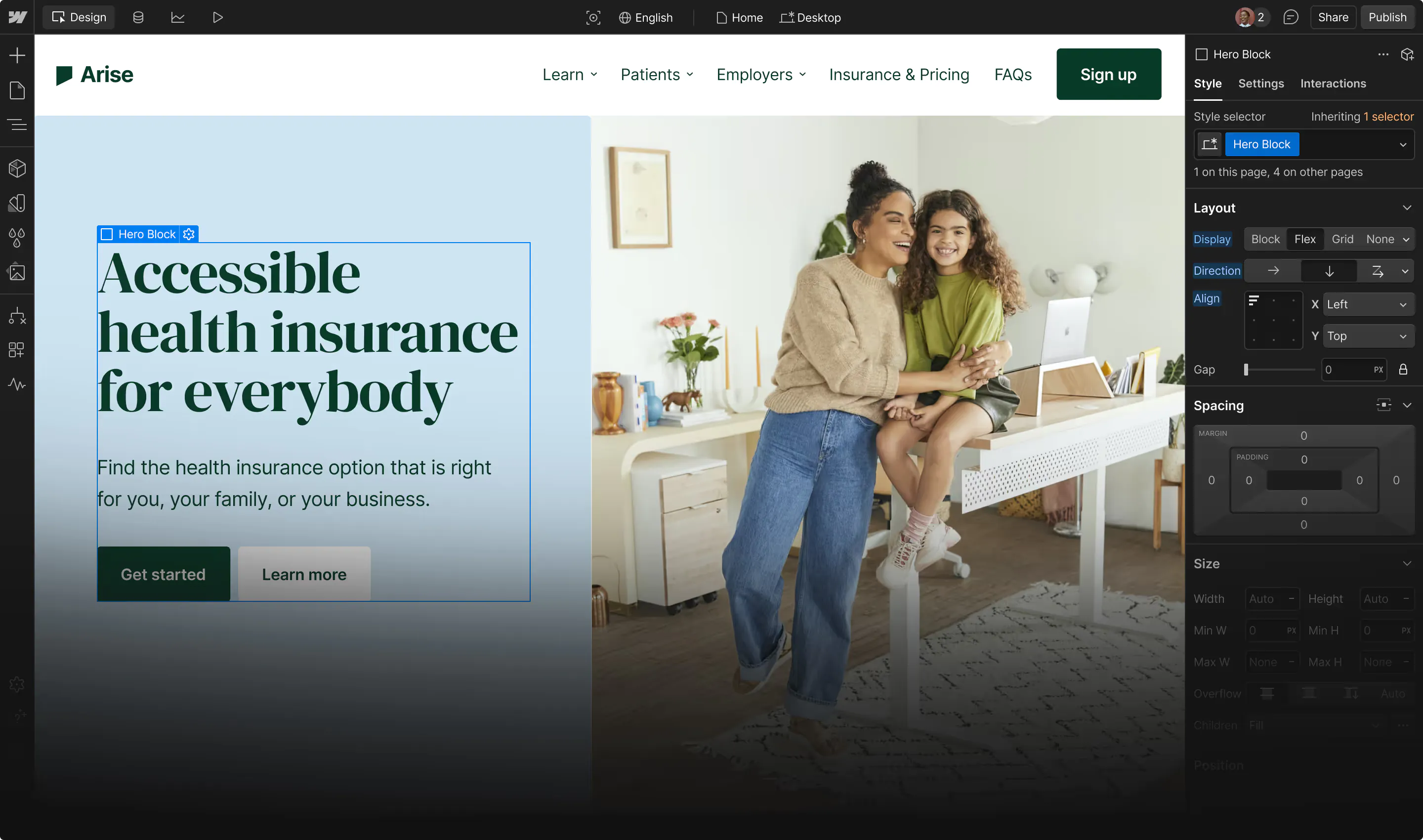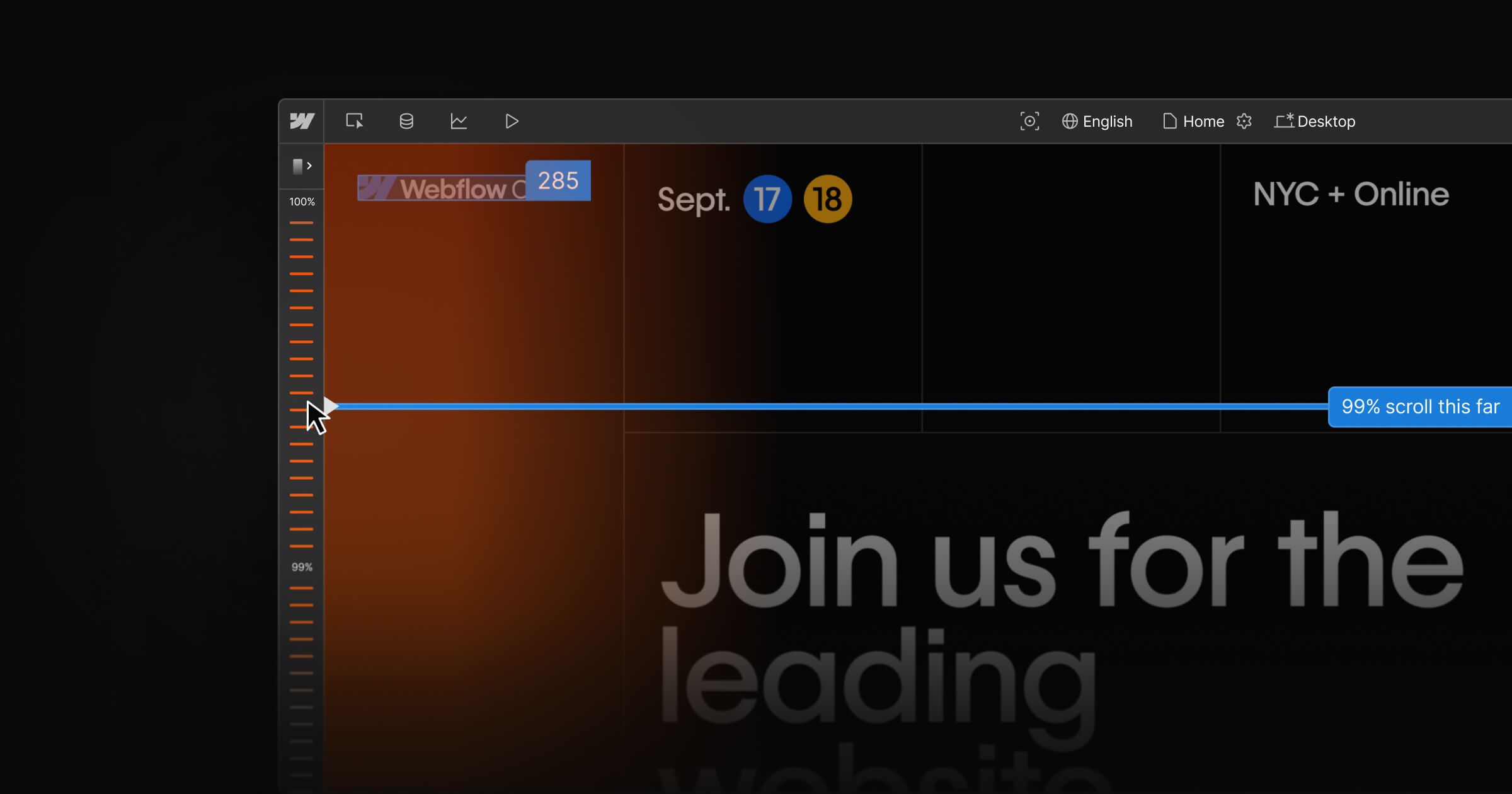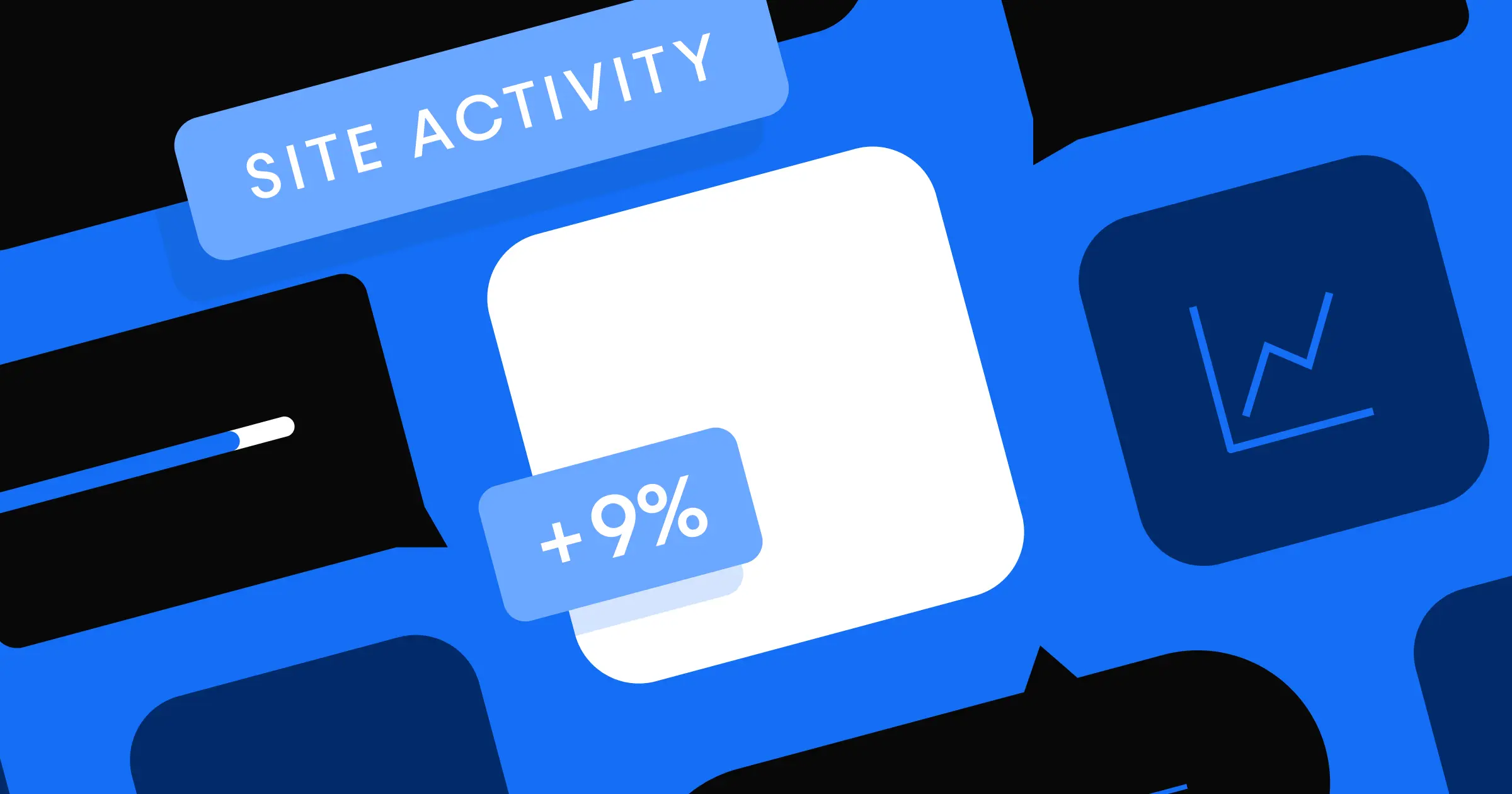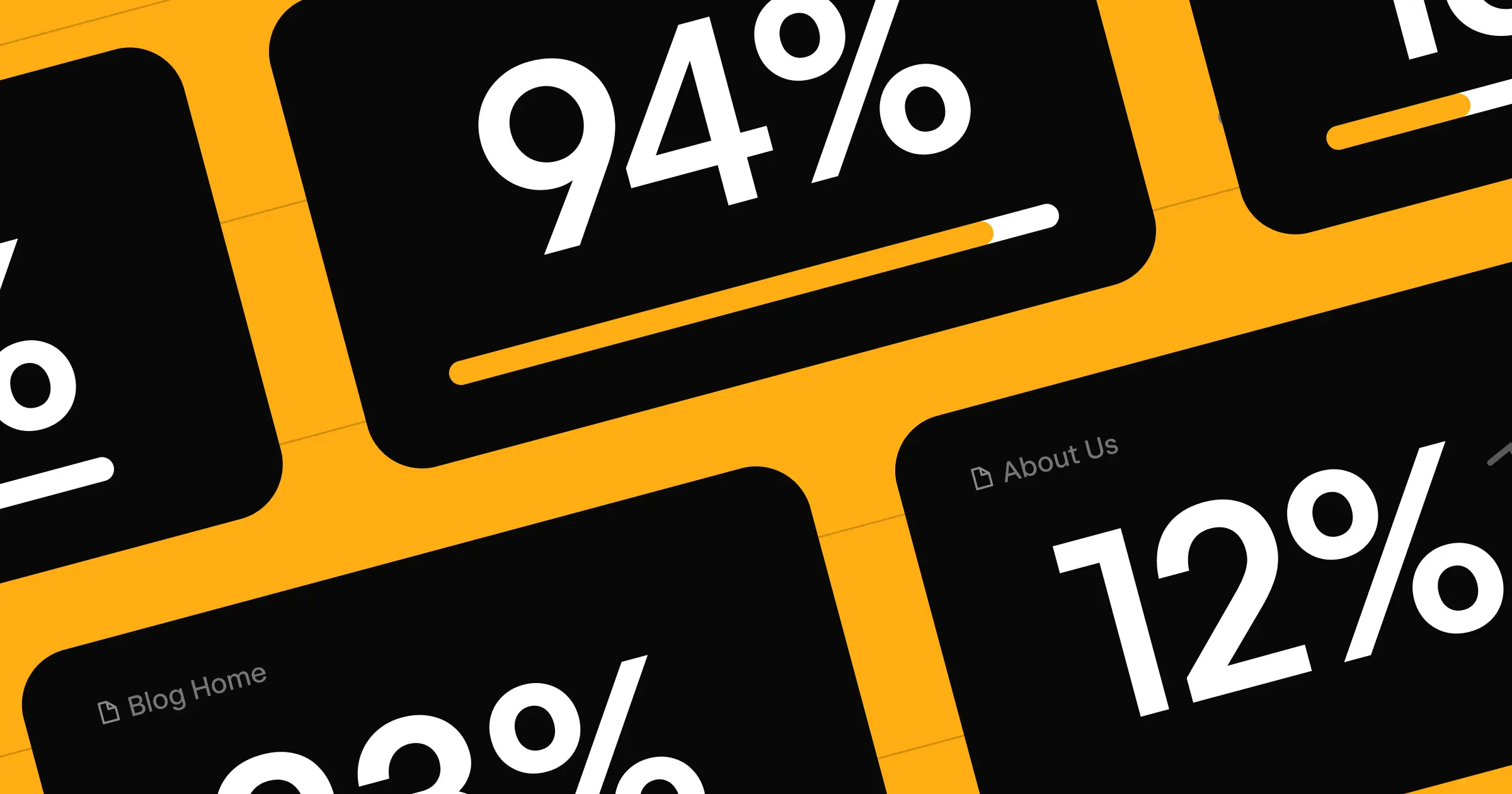The path visitors take through your website — from their first click to final conversion — can make or break your business results.
Yet many website teams struggle to access actionable insights when it comes to understanding these critical user journeys, missing out on opportunities to significantly increase demo requests and other high-value revenue driving conversions.
Visual analytics, embedded directly in the platform where teams build and manage websites, is changing that reality by putting user behavior data exactly where designers, editors, and marketers can act on it immediately. Read on to learn more and get a three-step roadmap to optimizing user journeys.
Understanding the anatomy and importance of user journeys
A user journey represents the complete path a visitor takes from entry to exit (or conversion) on your website. Consider this common scenario: a visitor discovers your blog through search, reads part of an article, clicks a call-to-action to learn more about your product, but then leaves the product page without downloading a gated asset or requesting a demo.
This journey contains multiple touchpoints worth analyzing:
- How the visitor found your blog content
- How they engaged with your content
- Whether they clicked your CTA
- How far they scrolled on the product page
- At what point they abandoned your site altogether
Each touchpoint presents an opportunity to encourage deeper engagement, reduce bounce rates, increase content relevance, or improve navigation flow.
Understanding how visitors navigate your site directly impacts your bottom line. For decades, researchers like Forrester have documented how a site with well-designed user journeys can achieve up to 200% higher visit-to-order conversion rates than a poorly designed site — while visit-to-lead conversion rates can be more than 400% higher on sites with superior user experience.
These improvements translate directly to revenue growth. When you increase conversion rates, you extract more value from your existing traffic and marketing spend. Every visitor becomes more valuable, and your customer acquisition costs drop while revenue per visitor increases.
The analytics gap: why web teams can’t use their data
For most marketing organizations, the problem isn’t lack of data about user journeys — it’s accessibility and timing.
Traditional website analytics platforms weren't designed for the people who actually create websites. These platforms prioritize complex reporting features that serve data analysts and performance marketers well, but leave designers and content creators struggling to get the insights they need when they need them.
When you have to stop your work, log into a separate tool, and decode data before making changes, quick improvements become slow projects — or get missed entirely. The result is a disconnect between data and action: designers place buttons based on instinct rather than evidence, content marketers publish without knowing what actually engages their audience, and teams default to guesswork over user insights.
“When you’re going to different tools or people to ask for insights, that adds a lot of friction along the way,” says Corey Moen, Manager of Web Design at Webflow. “Especially after a launch, when you’re going into the mode of taking the site to the next level, you need to see how people are using it and make actionable, data-driven decisions.”
How Webflow Analyze fixes the data disconnect
Webflow Analyze eliminates that friction by putting user behavior data directly where web teams work. Instead of switching between design tools and separate dashboards, you get visual analytics overlaid on your actual site pages.
At the heart of Webflow Analyze are two visualization approaches that make user behavior immediately clear:
Clickmaps show you exactly where people are engaging on your pages. Instead of wondering whether that button placement is working, you can see the heat patterns of actual clicks and taps. You'll quickly spot which elements draw attention and which get completely ignored, plus identify places where visitors expect something to be clickable but find dead zones instead.
Scrollmaps reveal how far down your pages visitors actually go before they lose interest and leave. This answers crucial questions about whether your most important content and calls-to-action are positioned where people will actually see them, or if they're buried too far down the page.
These tools provide a complete picture of the user journey that's easy to understand and act on quickly — no complex dashboards to filter through or abstract metrics to interpret.
Your roadmap to user journey optimization with Webflow Analyze
Webflow Analyze helps you improve user journeys across three key pillars: understanding initial engagement, optimizing CTAs, and improving destination pages. Here's the playbook that web teams are following to turn user behavior data into measurable improvements.
Step 1: Understanding initial engagement
The first few seconds of a visitor's experience make or break their entire journey. Use scroll depth and interaction data to understand how users engage with your landing pages and blog content.
Here’s what to look for:
- Layout adjustments: Move critical CTAs higher on the page if scroll data shows most visitors don't reach them
- Content optimization: Reduce bloat or restructure information hierarchy based on engagement patterns
- Above-the-fold improvements: Strengthen your value proposition in the area where most visitors make stay-or-leave decisions
Case study: As we were testing Webflow Analyze with early users, one team discovered that 70% of visitors were dropping off just before reaching a new feature section they'd positioned mid-page. Using scrollmap data, they repositioned the content higher for better visibility, immediately improving engagement.
Step 2: Optimizing CTA placement and messaging
Call-to-action optimization becomes precision work when you can see exactly where users click and where they don't. Visual click data helps you test different CTA copy, layouts, and positioning while uncovering friction points.
Optimize conversions through:
- CTA repositioning: Move underperforming buttons to spots where visitors are already clicking, based on your clickmap data
- Clickability improvements: Fix elements that look clickable but aren't, or make important elements more obviously interactive
- Message testing: Refine CTA copy based on which versions generate more engagement
Case study: Our own growth team at Webflow experienced this power firsthand on our pricing page. Visual analytics revealed that visitors weren't engaging with plan CTAs as expected. After investigating, they discovered that lengthy header copy was pushing CTAs below the fold for most visitors. The team shortened the header to pull CTAs higher up the page — a simple change that led to a 10% lift in signups.
Step 3. Improving destination pages
Destination pages are the key pages where you want users to convert — product pages, signup forms, contact pages, or important content hubs. Understanding drop-off patterns on these pages helps optimize your entire conversion funnel.
Look for opportunities around:
- Content reordering: Move key information higher up on the page based on where visitors typically stop scrolling
- Friction reduction: Identify and eliminate elements that cause visitors to abandon the page
- Flow optimization*: Improve navigation between related pages to keep visitors moving through your conversion funnel
Use case: A SaaS company might discover that visitors need pricing information earlier in their product page journey, or that technical specifications should come before feature descriptions. An agency might find that case studies work better than service descriptions for keeping visitors engaged.
*Tip: Webflow Analyze provides page-to-page navigation flow data to better understand the user journey, helping you optimize navigation elements and remove friction points that limit conversions.
Best practices for cross-functional optimization
Getting the most out of visual analytics requires coordination across your web team. Here's how to make it work for everyone involved.
Enable collaborative decision-making
Visual analytics create a shared language between marketers, designers, and content creators. When everyone can see the same behavioral data mapped directly to page elements, discussions shift from opinions to evidence-based optimization strategies.
Use shared visual data to:
- Align teams around user behavior patterns rather than assumptions
- Prioritize optimization efforts based on actual impact opportunities
- Speed up decision-making by eliminating lengthy data interpretation phases
Build continuous optimization workflows
Visual analytics integrate optimization into your regular design and content workflows rather than treating it as a separate activity. Instead of waiting weeks for reporting, you can track how new layouts perform, test different element placements, or address friction points as soon as they appear.
This creates faster feedback loops with fewer blockers, so make reviewing analytics a regular part of your design workflow — just like checking responsive breakpoints or testing functionality.
Focus on iterative improvements
Rather than waiting for major redesigns, use visual analytics to make incremental improvements that compound over time. Small changes informed by user behavior data often deliver outsized results.
For example, commercial real estate services firm Walker & Dunlop implemented Webflow’s analytics and optimization tools and quickly built a culture of optimization. They drove a 56% increase in form fills and 23% growth in year-over-year organic search traffic, and the marketing team now pushes 10-15 content updates daily — while using real user data to track conversion paths and optimize content for engagement.
As Kokko Tso, Vice President of Digital Marketing, says, "Combined with Webflow's visual-first platform, Optimize and Analyze empower our teams to evolve with our clients, experiment and pivot quickly, and, ultimately, create more personalized digital experiences."
Start optimizing user journeys today
Understanding how visitors move through your website — where they engage, where they get stuck, and where they leave — is critical for improving conversions and business results. Visual analytics make this understanding accessible to everyone on your web team, not just data specialists.
When you can see user behavior data directly on your pages, optimization becomes part of your regular workflow. You spot problems faster, test solutions immediately, and make improvements to streamline the user journey.
Ready to see exactly how visitors navigate your site? Try Webflow Analyze and discover what your user behavior data can reveal.



















Start using Analyze today
Webflow Analyze puts a native, unified view of visitor behavior into the hands of designers and content marketers — so you can make data-backed decisions that improve site performance.
